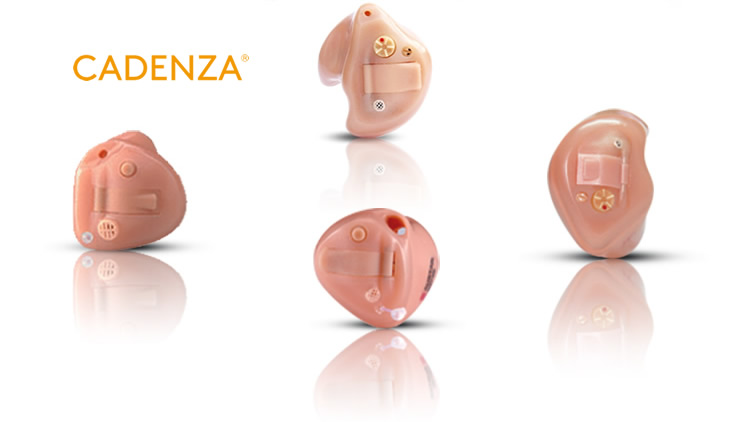What are the pros and cons of invisible hearing aids? and recommendations for use
Invisible hearing aids, also known as invisible-in-canal (IIC) or completely-in-canal (CIC) hearing aids, offer several advantages and disadvantages. It's important to note that the specific advantages and disadvantages can vary depending on the individual's needs, preferences, and the particular hearing aid model. Now, what are the advantages and disadvantages of invisible hearing aids?

Advantages of invisible hearing aids:
Cosmetically appealing: One of the significant advantages of invisible hearing aids is their cosmetic appeal. These devices are designed to fit deep inside the ear canal, making them virtually invisible when worn. They are a popular choice for individuals who want their hearing aids to be discreet and not easily noticeable.
Enhanced sound quality: Since invisible hearing aids are positioned closer to the eardrum, they can provide a more natural and accurate sound experience. The proximity to the ear canal allows for improved directionality and localization of sound, enhancing speech understanding in various environments.
Natural sound perception: Invisible hearing aids can provide a more natural sound perception compared to BTE hearing aid devices. Placing the hearing aid closer to the eardrum allows for better sound localization and improved localization cues, which can enhance the overall listening experience.
Reduction of wind noise: The positioning of invisible hearing aids deep within the ear canal can help reduce wind noise. The natural shape of the ear and the hearing aid's placement provide a protective barrier against wind interference, leading to a more comfortable listening experience in outdoor environments.
Disadvantages of invisible hearing aids:
Limited amplification: Due to their small size, invisible hearing aids may have limitations in their amplification capabilities. They might not be suitable for individuals with severe or profound hearing loss, as they may not provide sufficient amplification for their needs.
Limited features: Invisible hearing aids may have limited space for additional features, such as directional microphones, wireless connectivity, or telecoil functionality. While many modern invisible hearing aids have advanced features, the options may be more limited compared to larger behind-the-ear (BTE) or receiver-in-canal (RIC) models.
Handling challenges: Due to their small size and placement deep within the ear canal, handling invisible hearing aids can be challenging for some individuals, especially those with dexterity issues. Inserting and removing the devices may require practice and dexterity, and the small size can make them more prone to loss or damage if mishandled.
Custom fitting requirements: Invisible hearing aids are custom-made to fit each individual's ear canal. This means they require professional fitting and may not be readily available for immediate use, as the manufacturing process typically takes longer than for standard hearing aids.
Potential for feedback and occlusion: Some users may experience issues with feedback (whistling or squealing sounds) or occlusion (a sensation of plugged ears).
Suggestions for using invisible hearing aids
Enhance Everyday Conversations: One suggestion for using invisible hearing aids is to maximize their potential in everyday conversations. These devices are designed to improve hearing clarity and speech comprehension, allowing you to actively participate in conversations without drawing attention to your hearing aids. Utilize their discreet nature to stay engaged in social settings, meetings, or family gatherings, and enjoy clear and natural sound.
Active Lifestyle: Invisible hearing aids are a great option for individuals with an active lifestyle. Whether you enjoy outdoor activities, exercise, or sports, these devices are designed to stay securely in your ears while providing the necessary amplification. You can move freely without worrying about the visibility or inconvenience of traditional hearing aids, making them an ideal choice for those who lead an active lifestyle.
Professional Settings: Invisible hearing aids can be particularly beneficial in professional settings, where maintaining a professional appearance is important. These devices are virtually undetectable to others, allowing you to feel confident and focus on your work or interactions without concerns about visibility. You can benefit from improved hearing while maintaining a polished and professional image in the workplace or during important meetings or presentations.
Remember, it is essential to consult with an audiologist or hearing healthcare professional to determine the most suitable hearing aid options for your specific needs and preferences.
CADENZA offers high-quality OTC hearing aids for distributors and the hearing impaired.
- Recent Posts
- The OTC Hearing Aid Wholesale Core – Customization, Compliance, and Smart Auditory Tech
- CADENZA A6: 100H Battery and 32-Channel Tech for OTC Hearing Aid Differentiation
- OTC Hearing Aid Dividends: CADENZA OEM/ODM Strategy for CVS/Best Buy Expansion
- Beyond Price: Why Global Distributors Choose CADENZA for OTC Hearing Aid Compliance and Volume
- Power Your Private Label: CADENZA Offers Unmatched OEM/ODM Scale for the OTC Hearing Aids
- The $100 Billion Question: How CADENZA Makes Quality Hearing Aids Affordable for Everyone
- Hearing is Believing: CADENZA Hearing Delivers Premium Quality Without the Prescription Price
- Discreet RIC Hearing Aids for a Natural Fit
- Smart Hearing Aids: App Control & Bluetooth for OTC
- Types of Hearing Aids
- BTE hearing aids
- ITE hearing aids
- Instant fit CIC hearing aids
- Rechargeable hearing aids
- RIC hearing aids
